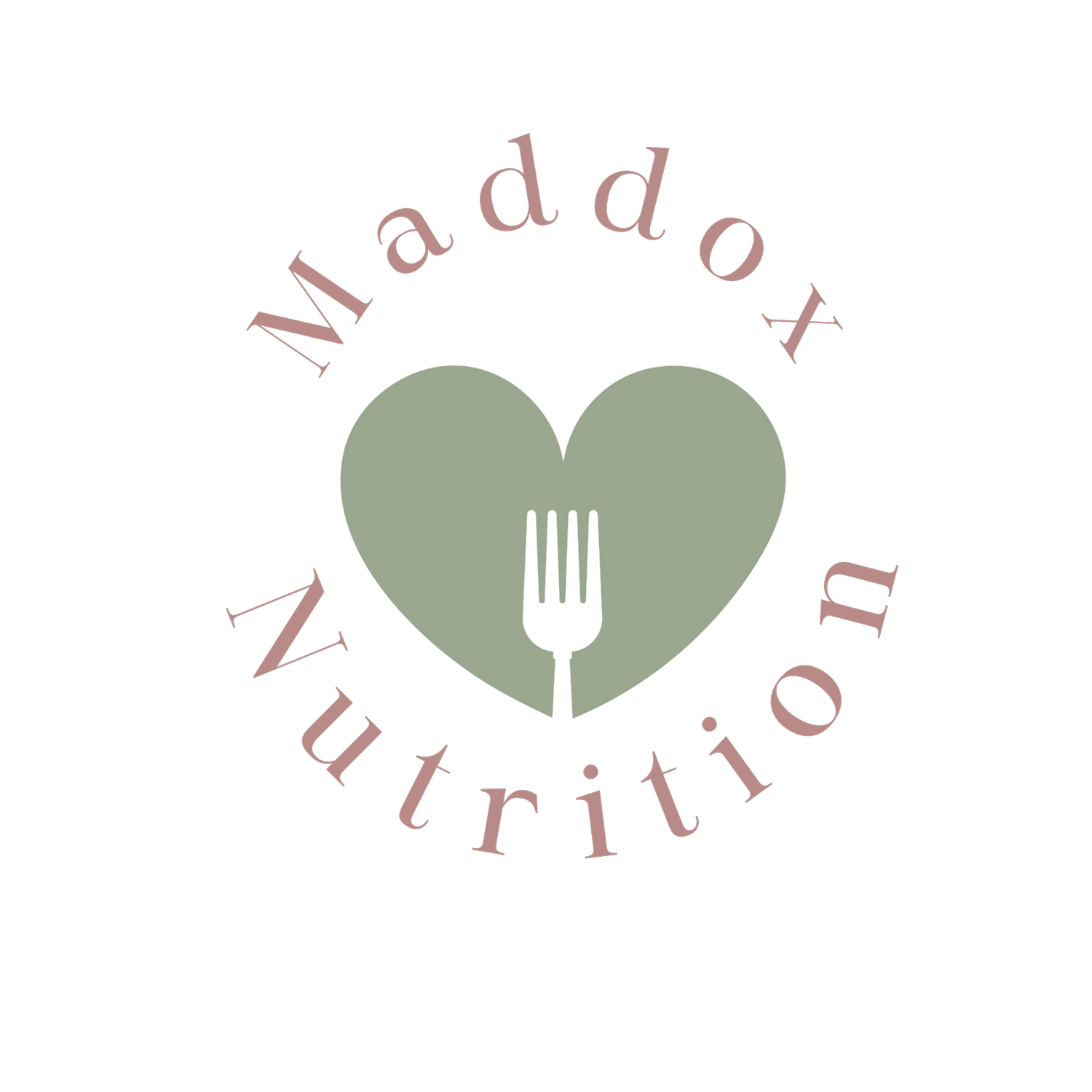What Hunger Really Feels Like (and Why Many People Don’t Recognize It)
Hunger cues are one of the most basic yet misunderstood signals your body gives you.
Thanks to diet culture most people have been taught to ignore them, suppress them, or second-guess them. This constant distrust of your body creates confusion around when to eat, what to eat, and how much food you truly need.
If you are a Christian, let Scripture remind you that not only did God take time to create your human body (Genesis 1:27), but your body is fearfully and wonderfully made (Psalm 139:14). These truths apply to how God designed your body to regulate itself through signals like hunger and fullness.
By tuning in to hunger cues, you are not giving in to “lack of willpower.” Instead, you are aligning with the way your body was created and honoring it through nourishment. Congruence between hunger cues and eating patterns also has a profoundly positive impact on physiological function, including metabolism and weight maintenance.
For those in eating disorder recovery or anyone seeking a non-diet, faith-based approach to food, learning how to recognize and respond to hunger cues is essential for rebuilding trust with your body.
Why many people don’t recognize hunger cues
Diet culture has distorted the meaning of hunger. Instead of viewing hunger as a normal, God-given cue that your body needs fuel, many programs and weight-focused approaches label hunger as something to fight against.
You may have been told to drink water instead of eating, to suppress your hunger with gum, or to ignore your body until a set time on the clock. Over time, these habits condition you to distrust the very signals that are meant to guide whether it’s time to eat or when your body has had enough food.
Eventually, hunger cues can become faint, inconsistent, confusing, or seem to disappear entirely. What once was a clear signal from your body may now feel unreliable, making it harder to know how to respond with nourishment.
This disconnection is not your fault. The human body is hardwired for survival, and hunger cues will dissipate when chronically ignored in an effort to save precious energy. The direct outcome of diet culture’s constant message that your body cannot be trusted actually leads your body to not trust you!
But Scripture reminds you of the opposite truth: your body was created with wisdom and purpose.
As 1 Corinthians 10:31 says, “So whether you eat or drink or whatever you do, do it all for the glory of God.”
Hunger is not a weakness to fight against; it is a God-given design to help you care for yourself with intention. This also emphasizes that even common activities like eating and drinking can become acts of worship.
By listening to your hunger cues and responding with nourishment, you are not only meeting a physical need but also honoring God through the way you steward your body.
The different types of hunger
Hunger is not one-dimensional. You may assume hunger only means a growling stomach, but the truth is more complex. There are several types of hunger cues, each pointing to different needs.
1. Physical hunger
Physical hunger is your body’s biological signal that energy needs to be replenished. This type of hunger is often felt in the stomach but can show up in other ways as well.
Signs include:
Stomach growling or emptiness
Feeling lightheaded or dizzy
Trouble concentrating
Low energy or fatigue
Headaches
Irritability or mood changes
Difficulty making decisions
Feeling shaky or weak
Increased thoughts or preoccupation with food
A hollow or uncomfortable sensation in the stomach
Reduced patience or focus during conversations or tasks
Diet culture often encourages people to push past these signs, but doing so disconnects you from the way your body is meant to function.
Responding to physical hunger with consistent nourishment helps stabilize your energy and prevents these signals from escalating into extreme discomfort or overeating later on. Try to pay attention to these signals as soon as they show up.
2. Emotional hunger
Emotional hunger arises when food is sought as a way to cope with feelings such as stress, loneliness, sadness, or even joy. This is not something to feel ashamed of because God designed food to be comforting and communal.
However, emotional hunger differs from physical hunger in that it is less about fuel and more about emotional satisfaction.
Recognizing emotional hunger gives you the opportunity to pause, ask yourself what you really need in that moment, and respond accordingly. Sometimes food will meet that need; other times prayer, rest, or support from loved ones may serve you better and it’s alright!
3. Practical hunger
Practical hunger occurs when you eat because you know your body will need fuel soon, even if you are not currently feeling strong hunger cues.
For example, you may eat lunch before a meeting or a balanced snack before a long drive.
Practical hunger may also look like mechanically eating when appetite is low due to strong emotions or illness. This form of hunger is part of honoring your body’s needs in a proactive way. It reflects wisdom, much like planning ahead in other areas of life.
4. Taste hunger
Taste hunger is the desire to eat something specific because it sounds appealing, even if you are not biologically hungry.
For instance, you may want a piece of cake at a celebration or a comforting bowl of soup on a cold day.
Responding to taste hunger in moderation is a normal part of enjoying food. On the other hand, denying yourself every craving often backfires, leading to heightened obsession with food.
Why reconnecting with hunger cues matter
Rebuilding trust with your hunger cues is about more than eating. It is about restoring the relationship between your body, mind, and spirit.
When you respond to hunger with gentleness instead of resistance, you strengthen your ability to care for yourself without fear or shame.
For many clients recovering from eating disorders or disordered eating, this process is deeply healing. It moves you away from constant food obsession and closer toward intuitive eating—an approach that prioritizes body trust and freedom over rigid rules.
5 ways to reconnect with your hunger cues
Reconnecting with hunger cues after years of ignoring them is not always easy. But with patience and intentional practice, you can begin to restore that trust.
Here are practical steps to help:
1. Slow down and pay attention
Many people eat quickly or while distracted, making it difficult to notice subtle hunger cues. Try to slow down and check in with your body before and during meals.
Ask yourself: Am I hungry? Where do I feel it? What foods sound nourishing right now?
2. Use a hunger scale
A simple hunger scale, ranging from 1 (extreme hunger) to 10 (overly full), can help you assess your body’s needs. For a visual, simply search for a “hunger fullness scale,” online.
Aim to eat when you are at a moderate level of hunger (around 3–4) and stop when you feel comfortably satisfied (around 6–7). This is not about perfection but about awareness.
3. Keep a gentle journal
Instead of tracking calories or macros, keep a journal that notes how your body feels before and after meals. Record observations like energy levels, mood, and satisfaction. This will help you see patterns and better understand your body’s signals.
4. Allow all kinds of foods
Part of reconnecting with hunger cues is removing the moral labels diet culture attaches to food. These labels often sound like calling certain foods “good” or “bad,” describing meals as “clean” or “junk,” or even framing treats as “sinful,” “guilt-free,” or “cheat foods.”
When foods are given moral value, eating becomes tied to shame or pride instead of nourishment and gratitude. This makes it harder to trust your body’s cues and can lead to constant second-guessing.
Release these labels and you create room to view all foods as neutral, focusing instead on how they support your energy, satisfaction, and overall well-being.
5. Practice grace and patience
Relearning hunger cues is a gradual process. Some days you may misinterpret signals, and that is okay.
You are rebuilding trust with your body after years of outside voices telling you to silence it, and that takes time. At first, you may notice hunger only when it feels extreme, or you may confuse emotional or practical hunger for physical hunger.
With patience and consistency, these signals become clearer and easier to identify. And each time you pause, listen, and respond with nourishment, you strengthen that connection.
Common challenges in recognizing hunger
Even as you practice, certain challenges can make hunger cues harder to recognize. These include:
Chronic dieting or restrictive eating, which blunts hunger signals
Busy schedules that distract you from noticing physical cues
Emotional stress, which can mask or intensify hunger
Illness or certain medications that alter appetite
Drinking excessive caffeine, which may suppress appetite and delay eating
Negative past experiences with food, which can create fear or distrust around responding to hunger
Neurodivergence, trauma, or innate physiological disruptions to the hunger-fullness communication system between the brain and digestive system
Understanding these challenges helps you approach the process with compassion. This is why it is so helpful to work one-on-one with a Registered Dietitian experienced in both intuitive eating and unique medical and mental health needs.
You may not feel strong hunger cues right away, but consistency in responding with regular meals and snacks can help restore them.
Hunger cues are not enemies to silence but guides to honor
Learning to honor hunger cues is an important part of healing your relationship with food, but it is not the whole picture. True nourishment goes beyond what is on your plate. It also involves meeting emotional, relational, and spiritual needs.
Diet culture pushes the idea that discipline is about ignoring hunger and controlling your body. A non-diet, Christian perspective teaches the opposite: discipline involves caring for your body as God designed it, listening to its needs, and finding balance without fear.
This shift reduces the constant preoccupation with food. When hunger is no longer something you fight, you free up energy and attention for the things that matter most—your faith, relationships, and purpose.
At Maddox Nutrition, we walk alongside you in this process of reconnecting with your hunger cues. With guidance from a Registered Dietitian Nutritionist, you will learn to trust your body again, and find freedom in eating without guilt.
If you are ready to begin this journey toward healing and food peace, we invite you to learn more at maddoxnutrition.co.
—
What you need to know
The difference between a Dietitian and Nutritionist
A dietitian is a regulated healthcare professional who has completed formal education in nutrition and dietetics, undergone supervised training, and is licensed to provide medical nutrition therapy for conditions such as diabetes, eating disorders, or gastrointestinal issues.
The title “dietitian” is legally protected in many countries, ensuring that only those who meet strict professional standards can use it.
In contrast, the title “nutritionist” is not always regulated, meaning anyone can call themselves a nutritionist regardless of training, though some may hold advanced degrees or certifications. Generally, dietitians are qualified to offer clinical nutrition care, while nutritionists often focus on general wellness and healthy lifestyle guidance.

